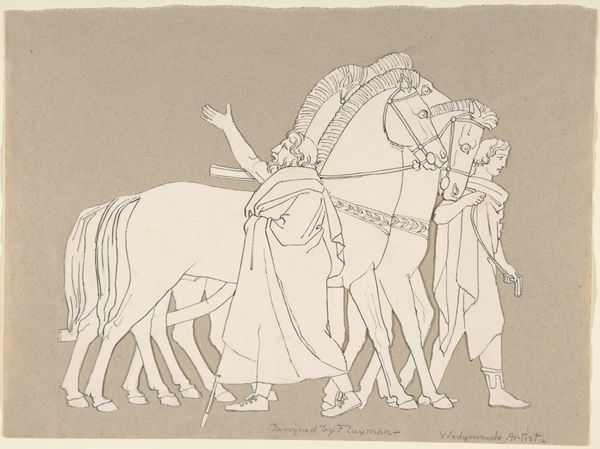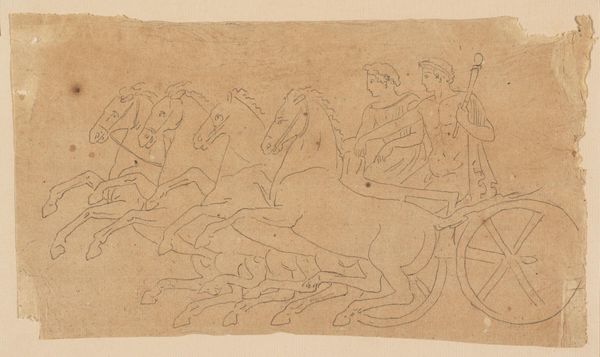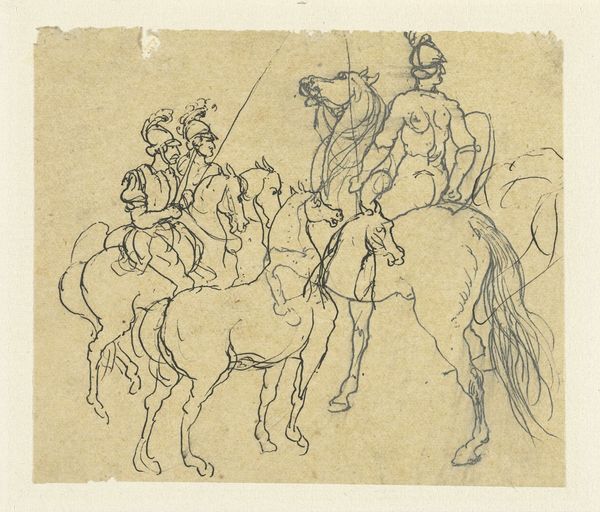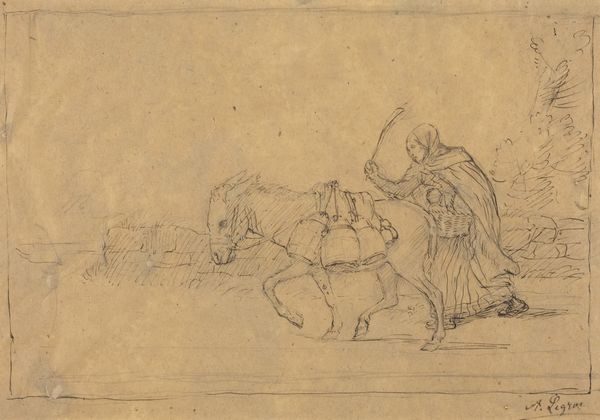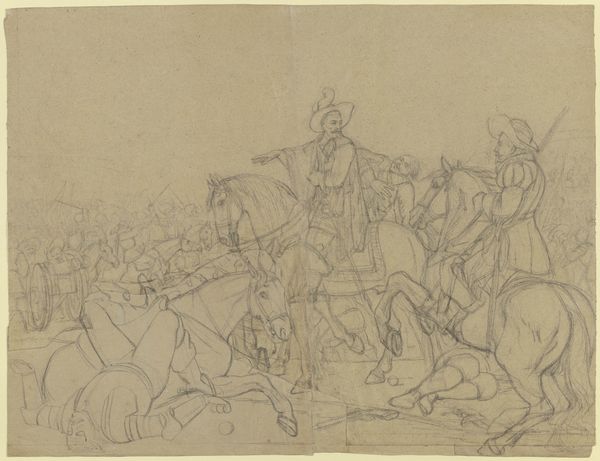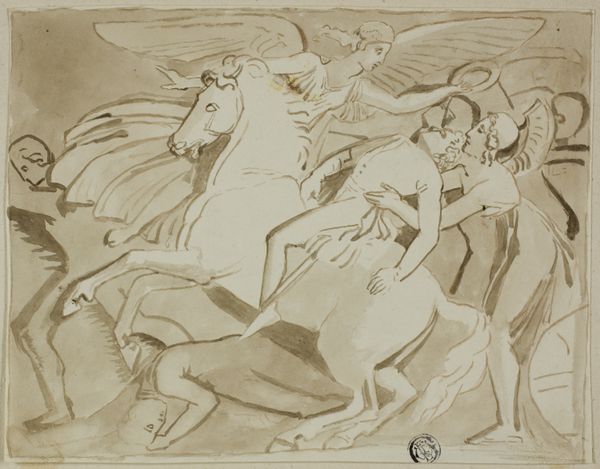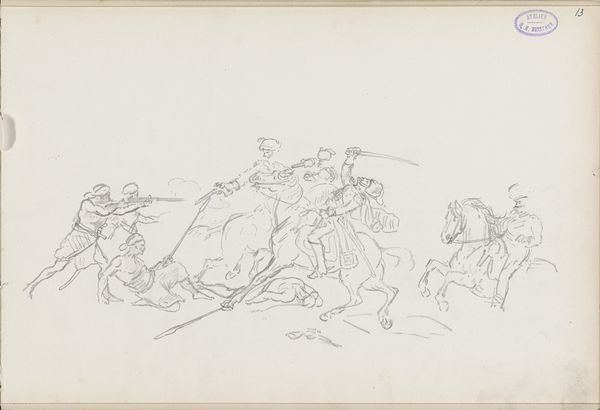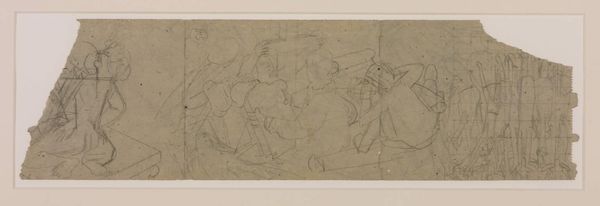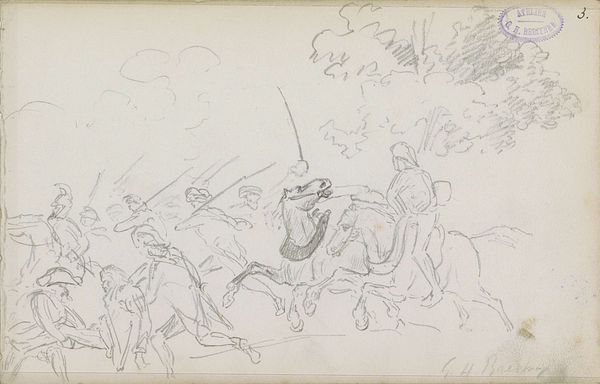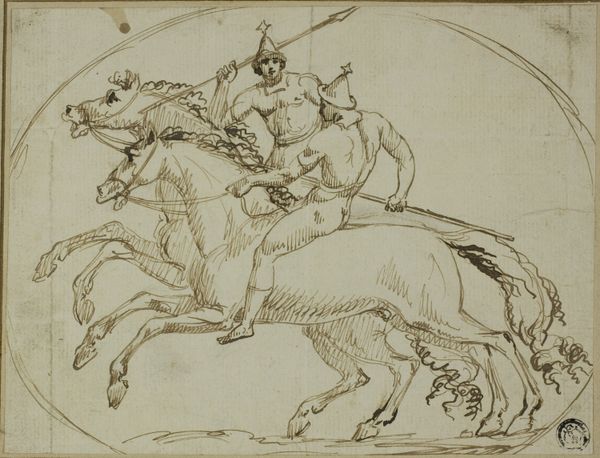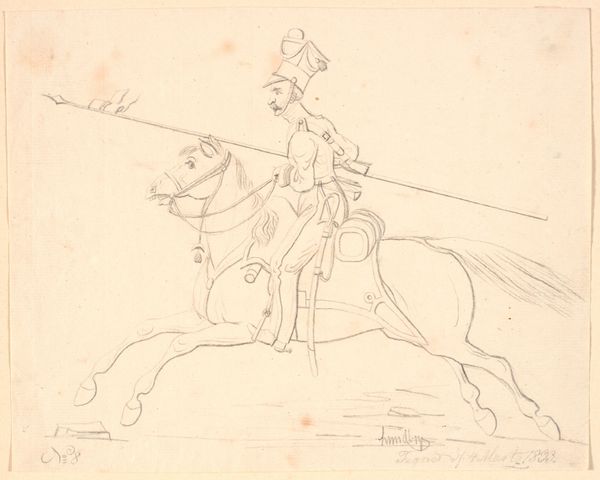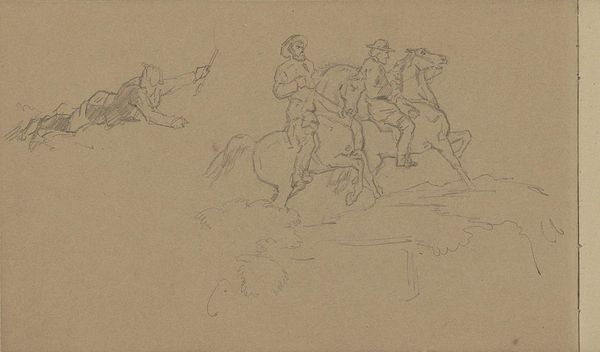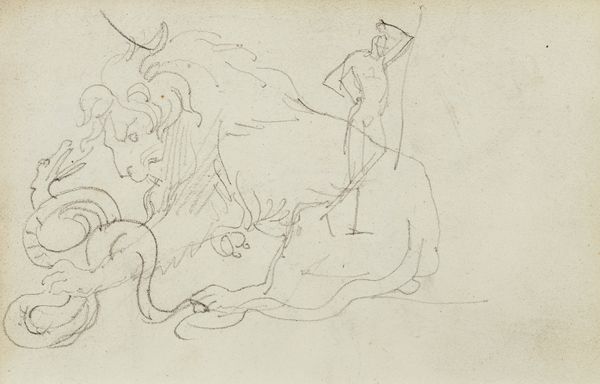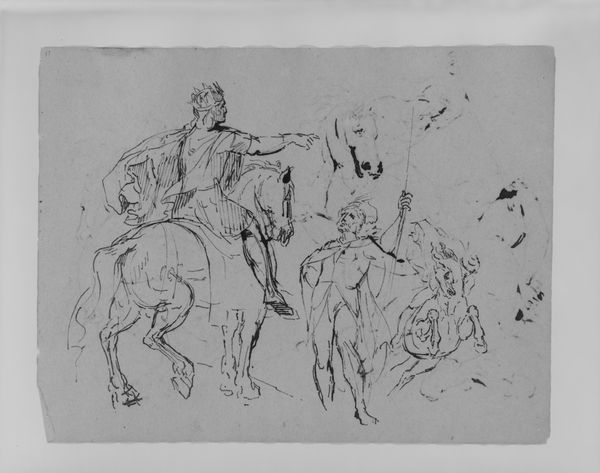
drawing, pencil
#
drawing
#
greek-and-roman-art
#
landscape
#
figuration
#
pencil drawing
#
ancient-mediterranean
#
sketch
#
pencil
#
horse
#
line
Copyright: Public domain
Editor: This delicate pencil drawing is "The Morn, All Beauteous to Behold, from Aeschylus, the Persians" by John Flaxman. It really strikes me as an image of motion and grace, despite the stillness of the medium. What elements stand out to you? Curator: Formally, I'm immediately drawn to the dynamism achieved through line. Note the economy of line; it's a contour drawing relying almost exclusively on outlines. This imbues the composition with lightness and airiness, enhancing the sense of swift movement. Consider, also, the implied lines – the gazes of the figures, the direction of the horses. They all contribute to a reading of forward momentum. Editor: So, the sketch-like quality actually helps convey speed, even though it’s a still image? Curator: Precisely. The lack of shading or deep modeling prevents the forms from becoming weighted or static. The horses, particularly, are rendered with an emphasis on their lean musculature and extended strides, creating a powerful impression of energy. Editor: That makes sense. Are there other elements contributing to that feeling? Curator: Yes. The rhythmic repetition of forms—the horses’ heads, the figures beside the chariot, even the radiating lines above—establishes a visual tempo. Notice the slight variations within these repetitions; each horse, each figure, is subtly unique, which prevents monotony and maintains the sense of life and movement. Editor: This linear style reminds me of classical friezes, I had not considered how that might imply movement too. Thanks for clarifying. Curator: And thank you. Close inspection such as this allows a deeper connection to the inherent artistic expression.
Comments
No comments
Be the first to comment and join the conversation on the ultimate creative platform.
